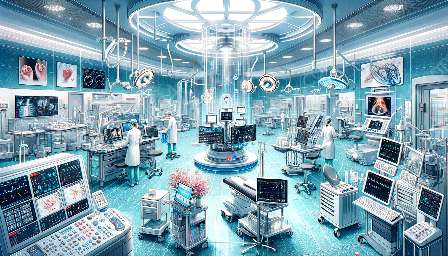Biomedical instrumentation represents a crucial component of medical research and development, contributing to advancements in medical devices and improving healthcare outcomes. This topic cluster explores the various aspects of biomedical instrumentation, including its role in medical research, the latest technologies, and applications in the field of medical devices.
The Significance of Biomedical Instrumentation
Biomedical instrumentation encompasses the use of various instruments, devices, software, and systems to support and enhance the diagnosis, monitoring, and treatment of medical conditions. It plays a pivotal role in medical research by providing researchers and healthcare professionals with the tools and technologies necessary to study and understand the human body's physiological processes, identify diseases, and develop innovative treatment modalities.
By continuously advancing the capabilities of biomedical instrumentation, researchers and developers can improve patient care, streamline clinical workflows, and enhance medical outcomes.
Technological Innovations in Biomedical Instrumentation
The field of biomedical instrumentation is characterized by rapid technological advancements that are constantly reshaping medical research and development. Innovations such as wearable sensors, advanced imaging technologies, and wireless communication systems have revolutionized the way medical data is acquired, analyzed, and utilized.
Moreover, the integration of artificial intelligence and machine learning algorithms has enabled the development of intelligent biomedical instrumentation systems capable of interpreting complex medical data, predicting disease progression, and personalizing treatment strategies.
- Wearable Sensors: Biomedical instrumentation has seen a rise in the development of wearable sensors capable of monitoring vital signs, activity levels, and disease-specific biomarkers in real time. These sensors enable continuous, non-invasive health monitoring, empowering patients and healthcare providers with valuable insights into individual health and wellness.
- Advanced Imaging Technologies: Imaging modalities such as magnetic resonance imaging (MRI), computed tomography (CT), and positron emission tomography (PET) have undergone significant advancements, leading to improved image resolution, faster scanning times, and enhanced diagnostic accuracy. These innovations have contributed to better disease detection, treatment planning, and patient management.
- Wireless Communication Systems: The integration of wireless communication systems in biomedical instrumentation has facilitated seamless data transfer, remote monitoring, and telemedicine applications. This capability is particularly beneficial for managing chronic conditions, providing access to healthcare in remote areas, and supporting teleconsultations between healthcare professionals.
- Artificial Intelligence and Machine Learning: Biomedical instrumentation now leverages artificial intelligence and machine learning algorithms to analyze large datasets, identify patterns, and assist in clinical decision-making. These technologies enable predictive analytics, early disease detection, and the development of personalized treatment regimens based on individual patient characteristics.
Applications of Biomedical Instrumentation in Medical Devices
Biomedical instrumentation directly impacts the development and functionality of medical devices, which are essential tools for diagnosing, monitoring, and treating various medical conditions. The integration of advanced instrumentation technologies has resulted in the creation of innovative medical devices with improved accuracy, portability, and ease of use.
Some notable applications of biomedical instrumentation in medical devices include:
- Diagnostic Devices: Biomedical instrumentation contributes to the development of diagnostic devices such as blood glucose monitors, electrocardiography (ECG) machines, and molecular diagnostic tools. These devices enable the accurate and timely detection of diseases, facilitating early intervention and effective disease management.
- Monitoring Devices: Instrumentation technologies are pivotal in the creation of monitoring devices such as patient monitors, wearable fitness trackers, and continuous glucose monitoring systems. These devices provide real-time data on vital signs, activity levels, and physiological parameters, supporting proactive healthcare management and personalized wellness initiatives.
- Therapeutic Devices: Biomedical instrumentation plays a crucial role in the advancement of therapeutic devices such as infusion pumps, implantable medical devices, and robotic surgical systems. These devices leverage instrumentation technologies to deliver precise and targeted therapies, improve surgical outcomes, and enhance patient safety.
- Rehabilitative Devices: The integration of biomedical instrumentation in rehabilitative devices such as prosthetics, orthotic devices, and physical rehabilitation equipment has led to the development of personalized, adaptive solutions for individuals with mobility impairments. These devices enable enhanced functionality, comfort, and patient independence through advanced sensor and control systems.
Conclusion
The evolution of biomedical instrumentation continues to drive breakthroughs in medical research and development, positioning itself as a cornerstone of innovation in the healthcare industry. By understanding the significance of biomedical instrumentation, embracing technological innovations, and harnessing its applications in medical devices, researchers and developers can propel the field towards new frontiers in healthcare delivery, disease management, and patient-centric care.


